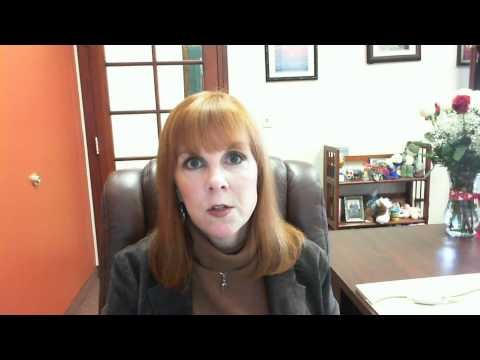Government fuels next housing collapse with unstable mortgages
Post on: 26 Август, 2015 No Comment

Photo: Shutterstock
Nobody wants to return to the kind of risky home loans that spurred 2008’s banking collapse. Sliding back toward lax lending would be nuts.
Yet Washington officially endorsed such loans this month.
Federally controlled mortgage giants Fannie Mae and Freddie Mac announced they’ll back loans to low-income Americans who put just 3% down, even though such loans have a high default rate.
The risky mortgage program has the blessing of Federal Housing Finance Agency chief Mel Watt, the former Congressional Black Caucus leader whom President Obama recently appointed to regulate Fannie and Freddie.
Watt also backs home loans for borrowers with “less-than-perfect credit scores.”
Since Fannie and Freddie guarantee 90% of US mortgages, private lenders will match their weaker standards. Many of these weak loans will, in turn, be securitized and traded on Wall Street.
This is the hazardous cycle that led to the financial crisis. So why are we repeating it?
Because the administration, with help from the media, has convinced the public that greedy Wall Street banks were to blame for the disaster, not Fannie and Freddie and their “mission” regulators in Washington.
“This could never have happened if the narrative about the financial crisis had properly located the problem in the reduction of mortgage underwriting standards brought on by the government’s housing policies and implemented largely through the affordable-housing goals,” former Financial Crisis Inquiry Commission member Peter Wallison says.
In a forthcoming book — “Hidden In Plain Sight: What Really Caused the World’s Worst Financial Crisis and Why It Could Happen Again” (Encounter Books) — Wallison reveals fresh evidence that ever-higher affordable loan quotas fueled the unprecedented and massive accumulation of subprime and other high-risk debt in the financial system.
Starting in 2000, HUD announced it was jacking up the quotas for low-income borrowers to 50% in the interest of diversity, meaning Fannie and Freddie had to find a non-prime loan for every prime loan it acquired. HUD explained it wanted Fannie and Freddie to “become more comfortable with subprime lending.”
Fannie complained to HUD that the “higher goals force us deeper in subprime” and weren’t feasible due to losses. But HUD just raised them higher — up to 56% by 2008.
The only way Fannie and Freddie could comply was to keep lowering their underwriting standards. Over the period HUD was enforcing the quotas, down payments plunged.
In 1992, neither Fannie nor Freddie had any loans with down payments under 5%, Wallison notes. But by 2007, on the eve of the crisis, 26% of Fannie’s loans and 19% of Freddie’s had down payments that low.
“Loans with no down payment are very risky,” he explained. “And when combined with low credit scores, they have extremely high levels of defaultbecause the buyer has virtually no investment in the home.”
From 1997-2007, Fannie and Freddie acquired a combined $1.5 trillion in loans with subprime credit scores, and another $2.2 trillion in subprime securities.
As Freddie’s chief economist observed, losses were “inevitable,” but mortgage-backed securities were a key way for the mortgage giants to meet the HUD-mandated quotas.
Trying to avoid responsibility, HUD now argues Fannie and Freddie only bought these assets to compete for market share or profit from higher-yield investments. Nice try.
Based on new data and contemporaneous documents unveiled in Wallison’s book, which is scheduled for release Jan. 13, it appears beyond question that Fannie and Freddie purchased risky private-label securities in order to meet the affordable-housing goals.
A 2006 Fannie staff memo is eye-opening. “Everybody understood that we were now buying loans that we would have previously rejected but our mandate was to serve low-income borrowers,” it said.
“So that’s what we did.”
Greed was the last thing on their minds. In fact, Fannie was suffering serious credit and financial problems from acquiring subprime mortgages to meet the affordable housing goals.
In a 2007 memo to HUD, the company complained its 2006 “cash flow cost” from risky goals-compliant deals had climbed to $140 million while its “opportunity cost” was $470 million in foregone revenue.
Loans with no down payment are very risky. And when combined with low credit scores, they have extremely high levels of default. — Peter Wallison
Fannie kept buying subprime loans, even though “these efforts to acquire goals-rich loans are partially responsible for increasing credit losses,” then-CEO Daniel Mudd said in a December 2007 letter to a senior HUD official, adding that Fannie had “relaxed certain underwriting standards in an effort to meet the housing goals.”
Freddie executives, meanwhile, complained that over half the loans they acquired to meet HUD’s affordable targets had “higher expected default probabilities.”
When the housing bubble burst, these loans were the first to default. When the music stopped, over three-quarters of all the bad loans ended up on the books of Fannie and Freddie and other federal agencies — not Wall Street banks.
The evidence of government guilt in the crisis is overwhelming. Yet Wallison says it was covered up by the Nancy Pelosi-appointed commission on which he served as a minority Republican voice.
He says the Democrat chairman of the panel even censored his dissenting opinion in the final report sold in bookstores.
Because the government’s role was hidden from the public, he charges, the Obama administration is getting away with doubling down on reckless housing policies.
Wallison notes that last year, after meeting with the president, bank regulators suddenly reversed course and agreed to let securitizers pool and sell to Fannie and Freddie low-quality mortgages of 3% down and subprime credit without covering any of the risk — even though such loans experienced double-digit default rates during the crisis, and even though the Dodd-Frank financial reform law required such risk retention. His explosive book can’t come soon enough.
Paul Sperry is a Hoover Institution media fellow and author of “The Great American Bank Robbery: The Unauthorized Report About What Really Caused the Great Recession.”














